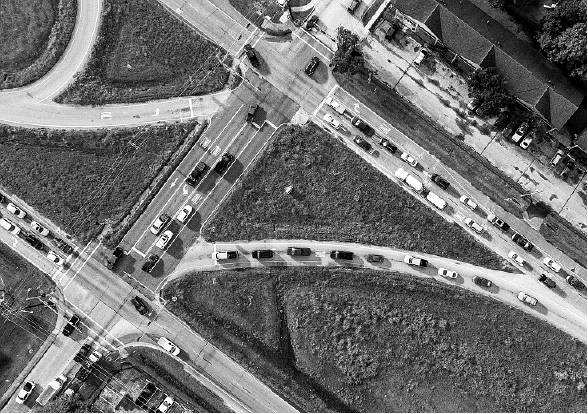Commentary
Change is afoot as cities weigh road rationing, but tech can help
CHRIS TOMLINSON
Instead of a single high-occupancy-vehicle lane on the highway, what would happen if most roads were limited to cars carrying two or more people?
Or how about dedicating lanes solely for taxis and buses, or perhaps large trucks? Technology might also help with road congestion, what if you attempted to hail an Uber or a Lyft, but the app rejected your request and directed you to a city bus instead?
Cities with little room to expand roads and bridges are reconsidering which drivers and vehicles they should allow on the limited supply of publicly-funded roads. These potentially expensive alternatives to gridlock are sparking controversy in a nation where people feel entitled to drive their car anywhere and anytime.
Roads, rails and ports are also critical for commerce. As technology transforms transportation, governments and businesses are rethinking how they can cooperate to connect customers with the goods and services they desire. Change is afoot.
How the private and public sectors can form partnerships to address transportation problems was amajor topic at the City of the Future Conference in San Antonio last week. Executives and bureaucrats discussed how to share data and innovations without violating consumer privacy or hurting competition.
Ask residents of almost any major metropolitan area and their biggest complaint is mobility. Traffic jams, slow public buses and insufficient protections for pedestrians and bicycles frustrate commuters who spend hundreds of hours of their lives waiting to get from one place to another.
Airports are an object lesson in why cooperation is necessary. The public sector provides the roads and the terminals while private companies provide the vehicles. Cities overhaul airports about every 20 years to adapt to new conditions while trying to predict how needs may change over the next 20 years.
“How do we get it right so that we don’t waste millions of dollars?” asked Stanley Young, advanced transportation and urban scientist at the National Renewable Energy Laboratory. “That’s where the data comes in.”
Cities and airports are asking ride-hailing firms like Uber and Lyft to share their data on the number of trips to the airport, when are they made, how long cars sit in traffic and how much time they spend at the curb. Architects and planners can use the data to make design decisions.
“We have tons of data in many different formats,” said Trevor Theunissen, senior manager of public policy and communications for Uber. “If we know what you are trying to solve for, we can figure out what we think the best data set or analysis is and the best format to turn that over.”
What’s more difficult for business is revealing what will come next. Will airports need to build landing spaces for flying taxis? Will they still need parking garages? Or can cities start dictating what is allowed on the roads, bridges and infrastructure they build?
Cities are encouraging the development of mobile phone apps that can offer access to all available forms of transportation, from taxis to public buses to ride-hailing services to electric bikes and scooters. But Los Angeles has proposed overseeing those apps to decide what services a passenger can choose under what circumstances. The LA app, for example, may reject a request for a taxi if a commuter train is available.
“The city of Los Angeles has proposed a dispatching model. They will say yes or no to the dispatches on private companies’ apps to better the usage of their infrastructure,” Theunissen said. “We have a lot of concerns for privacy and competitive reasons.”
The city argues that with limited road space, passengers should take the most efficient form of transit available, not necessarily the one they prefer. The alternative is to charge more to use roads, but critics say that would be unfair to the poor who already spend a higher proportion of their time and income on transportation.
The laissez-faire option is for the government to merely maintain the current roadways and allow private companies to jam up every available inch of concrete until commuters are forced to find alternatives. The public, though, wants less time in traffic, not more frustration.
As with any limited resource, the government will eventually need to ration road space. Cities need to involve the private sector, which has the data and technology to improve efficiency to avoid a ham-handed outcome.
The future of commuting need not be constant gridlock but finding an alternative will require deep conversations and compromises.
Tomlinson writes commentary about business, economics and policy. chris.tomlinson@chron.com twitter.com/cltomlinson

